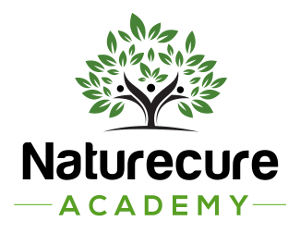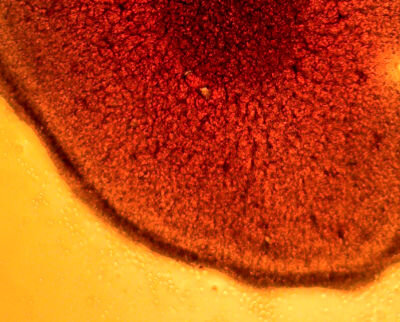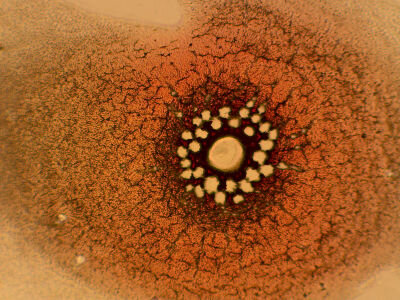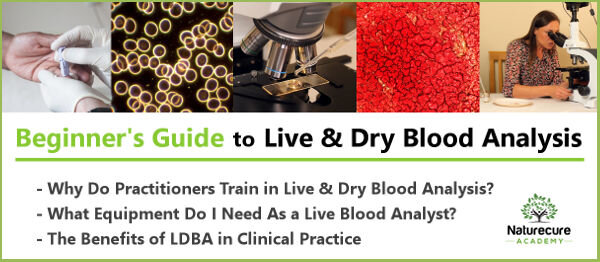
Dried Blood Analysis – a Holistic-Medical Blood Test
Dry Blood Analysis began as a medical application but has developed as a fantastic holistic health assessment tool. It has a wealth of science and research behind it which validates its use in the context of health screening and it can be used as part of a holistic health approach by the complementary therapist.
Blood is the most complex human biological fluid. It contains a huge variety of molecules, ions and cells; we can tell a lot about our health from what is in our blood and the way it behaves.
As medical science has progressed it seems we have discovered even more that the blood can offer and this is why it is so frequently tested by medical professionals to monitor health.
Nutritionists, naturopaths, and functional medical practitioners often use a variety of blood tests too, in order to assess various nutrient levels, inflammatory markers or liver enzymes for example. Rather than to prescribe medicine or diagnose disease the results of these tests are used to generate protocols that focus on supplements as well as dietary advice.
By relying on these types of tests, however, there is a danger that the therapist loses the holistic perspective and instead uses an allopathic approach to health - there can be a temptation to prescribe individual supplements to try to address specific test results directly.
There is a blood test that began as a medical application but has developed as a fantastic holistic health assessment tool. It has a wealth of science and research behind it which validates its use in the context of health screening and it can be used as part of a holistic health approach by the complementary therapist.
That test is called Dry Blood Analysis (sometimes known as the Oxidative Stress Test).
Medical and Scientific History of
Dry Blood Analysis (DBA)
Originally DBA was developed as a simple, quick health assessment of very sick patients that could be performed at the bedside. It was a solution to the difficulty of extracting enough blood from very sick patients in order to run tests. It was developed in 1939 by a New York Doctor called Emanuel Goldberger and he called it a blood film diagnostic test.
It involved puncturing the patient’s fingertip and allowing a bead of blood to surface. A microscope glass slide was then pressed onto the finger in order to take up the blood. This was repeated three times resulting in three circular ‘puddles’ of blood on the slide. The slide was then left for 20 minutes, allowing the blood sample to dry.
Once dry the blood films produce distinct patterns depending on the contents and the condition of the patients’ blood. Diseases left distinct patterns in these dry blood films and could indicate how serious the state of health in the patient was. By holding the slide up to the light the doctor was then able to evaluate the patterns with the naked eye.
This test was further developed in 1942 by Dr Bolen and was used as a screening tool for cancer. The cancer disease process creates a large amount of oxidative stress/free radical damage from the breakdown of tissue which produced specific patterns in the dry blood films. In reality, however, the test was not as specific as this; it could detect the presence of any chronic disease - not just cancer - that would cause the oxidation and breakdown of tissue, including all inflammatory processes.
In 1979 the Bradford Research Institute determined what was causing the distinctive patterns that appeared in the dry blood layers. They proposed a theory – The Reactive Oxygen Toxic Species (ROTS) theory of degenerative disease - which mapped the blood’s highly complex clotting cascade and determined how various chronic and acute disease processes interrupted this delicate homeostasis.
They proved that the metabolic by-products of disease processes (ROTS) would damage cells, tissues and organs and that this damage to health could be assessed via the ‘HLB’ test – a name derived from the initials of the researchers.
The test was essentially revealing the levels of inflammation in the body that was caused by free radical damage.
Current Scientific Research on Dry Blood Analysis
There is ongoing scientific research into biological fluids by research institutions continually mapping the diagnostic markers available from a single drop of blood. They have been able to confirm that the presence of certain disease processes do indeed generate specific characteristic patterns within dried drop of blood.
Researchers from the department of Chemical Engineering in Monash University, Australia have been studying the cracking patterns that appear in a drop of dried blood. Their method of blood sampling and drying is slightly different but the theory as to why and how certain patterns appear is similar.
The Russian Scientific Research Institute of Gerontology in Moscow has also been developing a dry blood analysis test which they call “cuneform dehydration of biological fluids”. They believe that the body’s biological fluids are just as indicative of morphological changes in the body as the body’s cells and yet medical research has really only been focussing on cellular abnormalities.
The Dry Blood Analysis Test
- The Holistic Approach
As a Live & Dry Blood Analyst this new research is exciting and can offer theoretical and scientific weight behind our method of health screening, despite the differences between our testing processes.
Our testing method is similar to the Goldberger, Bolen and HLB method except we take eight blood films, or layers, per sample rather than three, we look at the dry blood under the microscope to view it in more detail and of course we are not conducting our test in controlled laboratory conditions but rather in our own clinic.
The core of our approach to Dry Blood Analysis is based on -
The ROTS theory of disease which states that free radical damage, oxidative stress and inflammation are the cause and by-product of all disease processes.
The understanding that ROTS by-products circulate in the blood and affect the clotting cascade.
The fluid dynamics of a drying drop of biological fluid – the blood.
The distinctive patterns that are generated by various disease states.
The effect that the presence of various toxic elements that circulate within the blood can have on the dry blood patterns
The Dry Blood Analysis procedure involves puncturing a client’s fingertip and allowing a bead of blood to form. This is left on the finger for 30 seconds to allow the clotting cascade to develop. A microscope slide is then pressed onto the drop of blood eight times. The slide is left to dry, which takes about 15 minutes, and in that time the eight blood layers will go through an extraordinary transformation.
Dry Blood Analysis Sample
As blood is a biological fluid - it behaves like a non-Newtonian fluid. This means that as the water evaporates from layers of blood it generates currents within the fluid. This moves the contents of the layer around and creates the distinctive patterns.
How the contents move and where they end up within the layer is determined by the electro-biochemical properties of the red blood cells, the quantity of the various clotting factors in the plasma, toxins that have been circulating within the blood, by-products of pathogens, by-products of oxidation, free radical damage and degenerative disease processes. This is what generates the distinctive patterns within the dry blood layers that are indicative of various issues going on within the body.
Blood Drop Evaporation
Dry Blood Analysis can:
Detect the presence of inflammation
Assess the progression of inflammatory processes - chronic or acute
Determine the location of the inflammatory process – organ, tissue or system specific
Monitor the progression or reduction of the inflammatory process
Detect heavy metal toxicity
Reveal the presence of parasites
Show mineral and vitamin imbalances
Show antibiotic damage
Detect bowel inflammation
Assess the lymphatic burden
Assess protein metabolism
Learning Live & Dry Blood Analysis Together
– Our Approach -
At Naturecure Academy we teach Dry Blood Analysis alongside Live Blood Analysis enabling you to conduct a well-rounded blood assessment on your clients, in your own clinic.
Not only can Dry Blood Analysis offer immediate confirmation of many issues that may be at play within your client’s state of health – but you can also use Live Blood Analysis alongside it to expand your understanding of your client’s health picture. The two work extremely well together……
Example
You may suspect a client has a heavy metal issue because they have several amalgam fillings or they have had them removed recently. Heavy metals can disrupt biological processes, encourage bacterial and parasitic infection, settle in neurological tissue etc.
You would not want to start forcing the body’s tissues to release heavy metals, however, if the kidneys, the liver, the blood brain barrier or the bowel could not handle it.
Dry Blood Analysis can confirm the presence of heavy metals and indicate whether there is evidence of parasites as well.
Live Blood Analysis can reveal liver, kidney or digestive stress. It can also reveal nutrient deficiencies that may hamper the body’s ability to detox.
________________________________
Our clients’ Live & Dry blood patterns, indications and findings are unique - by being able to understand and verify these findings we can create bespoke protocols that get to the root cause of their issues effectively.
Taking this approach can also mean less cost for your clients, as they can avoid paying for further laboratory testing if it is not necessary. This can add extraordinary value to what you can offer as a practitioner and set you apart from your competitors.
If you would like to know more about Live and Dry Blood Analysis Training so that you can use it to assess your clients’ health then please follow this link.
You are also invited to join our Facebook Group ‘Learning Live Blood Analysis’ - a private group of students, qualified analysts and anyone interested in learning.
If you have any questions about this topic or LDBA in general please email Shirah directly at info@naturecureacademy.com or add a comment below!
FREE email mini-series when you join our Mailing List
Laboratory Blood Tests - The Best Way To Help Your Clients?
Laboratory blood tests are used by doctors and health practitioners but are they really the best way to help gain an understanding of your client’s health picture, to be able to form an effective treatment plan? For the holistic health practitioner Live Blood Analysis offers a much more useful approach that you can do in your own clinic.
We all know that blood is vital to life. It courses through our veins and is pumped around our body day in, day out from the beginning to the end of our lives.
It has been known to be a special fluid throughout the history of medicine, from the ancient times to present day, and despite the advances in medical knowledge we are still learning about it.
The invention of the microscope in the 1600s enabled us to finally see what blood was made of. We could identify red blood cells – the cells responsible for carrying oxygen and removing carbon dioxide - and the white blood cells – the cells of our immune system responsible for protecting us from pathogens. We could also more closely examine the contents of the plasma, the watery fluid that transports the cells through our circulatory system.
We have since discovered that blood is a very complex fluid. It contains many substances that are produced by our body’s trillions of cells or produced by the pathogenic organisms that reside or invade our body.
We can count up the cells within a sample of blood in a laboratory to be able to assess whether the levels are normal or abnormal. We can also test for the most sensitive of molecules in a sample, to uncover specific antibodies, antigens, products of inflammation, pathogenic compounds, liver enzymes, minerals and vitamin levels ……… the list goes on.
The more we learn about the body and understand our own biology and disease processes, the larger the menu of available blood tests becomes.
Do these blood tests lead to reduced disease, or just more complex diagnoses and more prescribing - whether it is pharmaceuticals or nutritional supplements?
There is no doubt that for practitioners of modern medicine, being able to test the blood for clues as to what is happening inside their patients can be extremely useful in determining a diagnosis and pharmaceutical prescription.
Functional medical practitioners also use blood tests to be able to help understand their clients’ complex health issues, that have not been or cannot be resolved medically.
For those of us who believe in a holistic approach, we take a wider view in order to create a complete picture of what is influencing a client’s health.
The solution to our client’s health issues encompasses more than a supplement prescription. It often also includes dietary advice, emotional and mental support, lifestyle changes that mean changes in habits and a movement/exercise prescription.
Why are these complex and nuanced blood test results problematic for a holistic health model?
Time – When you work in the alternative/complementary health field, you spend a lot of time on each client. Whether it is collecting a client’s case history, researching a client’s health conditions or medications, or undertaking an appointment and creating a health plan, it all takes time.
You must then add to this workload the extra time it takes to organise the tests, wait for and then read and interpret the results (if you can) and then explain them to your client.
Results – Tests are being developed and invented all the time - it is hard to keep up with the latest understanding on how they should be used. Tests have varying degrees of accuracy and some tests may return false positives or false negatives.
We can end up putting our faith in tests without really understanding how accurate they are (after all we are not medically trained), what else can influence the results and what the results actually mean in terms of how we make our recommendations to our clients.
We give our power away as knowledgeable practitioners, taking advice from laboratory analysts instead.
Cost –the fact that these tests cost a lot of money cannot be ignored. Clients that are desperate to improve their health will put their faith in these tests if you recommend them, and will believe the cost will be worth it. In some cases it will be.
BUT - this is very important to understand - there is little point in testing just the once. The body is a living organism in constant flux. The blood can change from day to day, hour to hour, moment to moment. If tests are going to be used to map a client’s health you need more than one reference point.
If clients are going to change their diet, take supplements or follow detox regimes – in time you will need to test again in order to check that the protocol is working. Are clients ready to accept this? Are you?
Allopathic or holistic - There is a danger, for the holistic therapist, in entering into the world of blood testing because we can easily end up in a doctor-like relationship with our clients; working in an allopathic model consisting of tests, results and prescription – rather than a holistic one. We become the middle man between customer and product.
Live & Dry Blood Analysis is the modern holistic solution to allopathic blood testing.
There are other ways to use blood to assess health; ways that allow us to gauge a person’s overall health – to see it from many angles and create a broader picture of what is happening within the body, the cells and the organs.
This is because blood affects every cell in our body. It flows through all of our organs and affects all our body’s systems.
Our blood’s plasma is a nutrient delivery system as well as a carrier of wastes. Vital nutrients and water are extracted from our digestive tract and deposited in the blood stream. From there they travel within the blood’s plasma, around the body and diffuse out of the circulatory system and into the tissues.
This is how our cells receive nutrients so that they can function. Additionally, cells release their wastes into the extracellular fluid which diffuses back into the circulation.
Normal blood with clear plasma
Let’s look at some of the blood components seen during Live Blood Analysis, which make it such an incredibly powerful tool for the holistic health practitioner:
Crystals
When looking at a person’s blood sample under the darkfield microscope, we are able to assess the contents of the plasma. You can see aggregations of waste products – called crystals – which can enter the circulation for various reasons.
Uric acid for example, a by-product of the metabolism of purine which mostly comes from certain foods in the diet, is usually filtered out as the blood passes through the kidneys. Uric acid crystals can be found in the blood, which can signal several things:
The kidneys are not working well, or
The digestion and metabolism of protein is not working well or
The diet contains too much protein.
Uric Acid Crystal
Fibrin
Fibrin is a clotting cascade protein produced by the liver and circulates in a dormant form ready to be activated in case it is needed to maintain circulatory homeostasis. If it appears in its activated form when analysing live blood it can indicate:
That there is damage in the linings of the circulatory system, or
The liver is stressed and is producing too much fibrin/too little fibrinogen, or
The client is prone to cardiovascular injury
Whatever the reason for the appearance of fibrin in the blood, possible consequence of it are impaired blood circulation, a tendency to create thrombosis and a lack of oxygen reaching cells, tissues and organs. This can affect the health of the whole body!
Fibrin Web
Blood Cells
The blood’s red blood cells do not leave the circulatory system. They spend their whole 120 days of life travelling through the veins, arteries, capillaries and organs – being squeezed, pushed and pulled.
The quantity, shape, size and quality of the red blood cells can reveal a myriad of issues - even whether any damage to them is caused during circulation or whether they were produced abnormally during their production in the bone marrow. Some of the things revealed in live blood analysis are:
Lack of specific nutrients – B12, folate, iron, essential fatty acids
Stress in certain organs like the spleen, the kidneys and the liver
Protein metabolism issues
Lack of oxygen in the tissues
Acanthocytes (distorted RBC)
The white blood cells of the immune system travel in and out of circulation and they can all be found in a live blood sample. The quantity, quality, shape and size can indicate several things about our immune system:
· Lack of nutrients – B12, folate, vitamin c, zinc and EFAs
· Allergies, parasites, pollution
· Evidence of pathogens – viruses, bacteria, fungus
· Evidence of possible autoimmune issues and inflammation
Cytotoxic WBC
As you can see, viewing the blood in its live state can reveal so much - without having to mix it with chemicals, put it through a machine, stain the cells and separate them out!
The above are just a few examples of issues that you can find in a person’s live blood sample, there are more indications found in the dry blood which I will discuss in another blog post!
Using the results of a client’s LBA effectively
The results of blood analysis can be included in a holistic health practitioner’s assessment of the client, taking into account the detailed case history and the blood analysis.
This enables them to build a more thorough picture of their client’s health, which is based not just on theory but also based on their clients’ own cellular health and the state of their blood’s plasma.
Live and dry blood analysis can assess the state of a client’s blood to determine possible root causes of any of their health symptoms, assess whether their routes of elimination are blocked, whether their digestive system is working correctly, the level of burden on the immune system, stress on the liver or kidneys and so much more.
The sensitive and knowledgeable holistic practitioner will know that simply supplementing missing nutrients will not fix the root cause. The results of blood analysis will help the practitioner devise a bespoke protocol for their client that will address the root causes of any nutrient deficiencies, for example, so the body can heal itself.
The holistic health model believes that everyone is unique and this applies to blood too – every client’s blood is a reflection of their uniqueness.
If you would like to know more about Live and Dry Blood Analysis Training so that you can use it to assess your clients’ health then please follow this link.
You are also invited to join our Facebook Group ‘Learning Live Blood Analysis’ - a private group of students, qualified analysts and anyone interested in learning.
If you have any questions about this topic or LDBA in general please email Shirah directly at info@naturecureacademy.com or add a comment below!
FREE email mini-series when you join our Mailing List
Shirah Mustardé Ba DipNN
Course Director
Naturopathic Nutritionist
& Live Blood Analyst



























